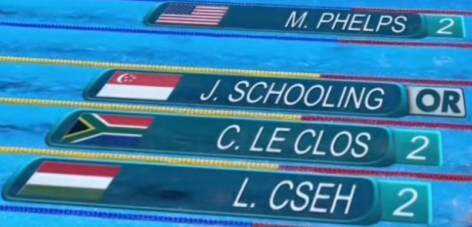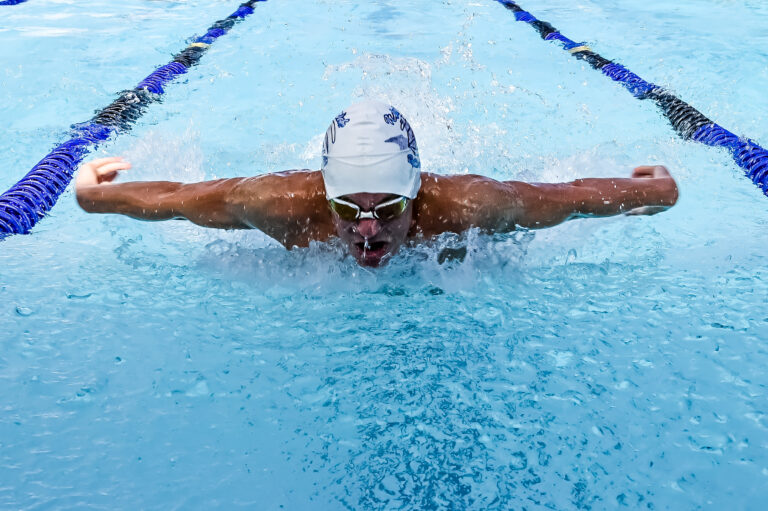7 Medalists for 3 “Medals”: Why So Many Swimming Ties in Rio?
At the 2016 Olympic Games there were three ties for medals in the swimming events, including one three way tie, something that’s never happened before in Olympic Swimming history. In fact, since 1984 there have only been 12 medal ties during Olympic swimming events. So everyone seems to be asking “why so many swimming ties in Rio?”. SwimTopia’s CEO, Mason Hale, has a theory…
First a Little Background
Electronic timing became the standard way to measure Olympic placings both in and out of the pool in 1968. Although modern timing systems can measure times to the millionth of a second, the standard measurement for swimming times has always been to measure to the 100th of a second. Historically there were instances when timing systems were used to break ties by measuring back to the 1000th of a second (millisecond), most notably in the controversial, and final, time that was done – to determine the winner of the men’s 400 IM final at the 1972 Olympics. In that race, Swede Gunnar Larrson and American Tim McKee were tied to the 100th in a time of 4.31.98 but rather than awarding each athlete a Gold the officials decided to review the times to the millisecond. The Gold was awarded to Larrson because the timing system showed he had edged out McKee by .002 of a second.
The controversial medal decision of the 1972 Olympics put a halt to measuring swimming races to the millisecond and it was written into the rule books that races would only be measured to the hundredths moving forward.
Why Not Measure to the Thousandth of a Second in Swimming?
I discovered some fascinating trivia when researching this article: “in a 50 meter Olympic pool, at the current men’s world record 50m pace, a thousandth-of-a-second constitutes 2.39 millimeters of travel.” Because FINA regulations allow for a difference in lane length of up to 3 cm it seems unfair to measure swimmers to the millisecond. In practice, as Caleb Cohen points out in his article on the Olympic ties, there is never a 3 cm difference per lane at the Olympics, modern measurements and exacting standards make that highly unlikely. But is there a chance that the lanes might vary by 2.39 mm? I’d guess yes, because there could be a tiny variance in the placement or thickness of a touch pad, or the position of a starting block. I agree with Cohen’s conclusion: he “believe[s] USAS/FINA uses a hundredth of a second as the most significant digit simply because anything tighter does not make one “better” than another and a tie is a legitimate result at that time difference.”
So: Why So Many Swimming Ties in Rio? Mason’s Theory Revealed
Mason’s theory on swimming ties came to him back in 2008, the year that the North Austin Aquatic League (NAAL) Championships were decided by half a point. Because the meet was so close members of the two teams duking it out (the Balcones Woods Blue Wave and the FAST Frogs) scoured the results in a way never done before, to see if any results were misrecorded and if points could be found to flip the decision. As the league’s ‘computer guru’ Mason was brought into the fray when the teams noticed the strangely large number of ties in the results that year.
Mason debunked the idea that the ties in 2008 were an anomaly using the Birthday Paradox. The Birthday Paradox is a probability theory that concludes that if you have 23 people in a room there is a 50% chance that 2 will have the same birthday, and with just 75 people in the room you have a 99.9% chance, despite the fact there are (typically) 365 days in the year. It sounds crazy, but explore the two links above to learn more. Such a high probability of having two matching birthdays in such a small group is counter-intuitive because people focus on the odds of two people hitting the same exact date. But the problem isn’t hitting an exact date, it is hitting the same date as any one of the other people in the group – and the same can be said for two people hitting exact times to the hundredth of a second in Olympic swimming finals (or even NAAL Championship results)…
Back in 2008 Mason used the Birthday Paradox formula on the wikipedia page to calculate the odds of two swimmers, that swim a time within one second of each other, getting the same exact time to the hundredth: if you have 13 swimmers within a second of each other there’s a greater than 50% chance two will hit the exact same time. In a swimming final of 8 swimmers, if the race it tight enough to have a range of one second between 1st and 8th there is a 25% chance that two swimmers will tie.
In the Men’s 100 Fly final the winner, Joseph Schooling from Singapore, was a clear winner, 0.75 in front of the three second place finishers. The rest of the field, 2nd through 8th place, had only 0.70 of a second separating them.
In the Women’s 100 Back final, the winner, Katinka Hosszu from Hungary, was a clear winner, 0.30 in front of the second place finisher and point 0.31 in front of the two Bronze Medalists. Second place and eighth in this case were separated by a margin of 0.49 seconds.
In the historic Women’s 100 Free final, the winners, Simone Manuel (the first African American woman to win an individual Olympic Swimming Gold) and 16 year old Canadian Penny Oleksiak, were a tight 0.66 in front of the last place finisher in the final…
Drawing a Conclusion
You don’t have to do the exact math (read, “I’m not going to do the exact math”) to see, from Mason’s use of the Birthday Paradox, that the reason there were so many ties for Olympic Swimming Medals this year is because there is SO much depth in world swimming today. The closer the races, the more people separated by smaller margins, the higher the chance of ties. That’s why there were so many swimming ties in Rio. Period. It’s tough out there! There are LOTS of fast swimmers! The sprint races in particular lend themselves to tighter margins. There have always been close races in swimming, but never this many, and never this consistently close between the top 8. Just as swimming world records have continued to fall, it’s likely that the number of fast swimmers and close races – and thus ties – will continue to rise.



